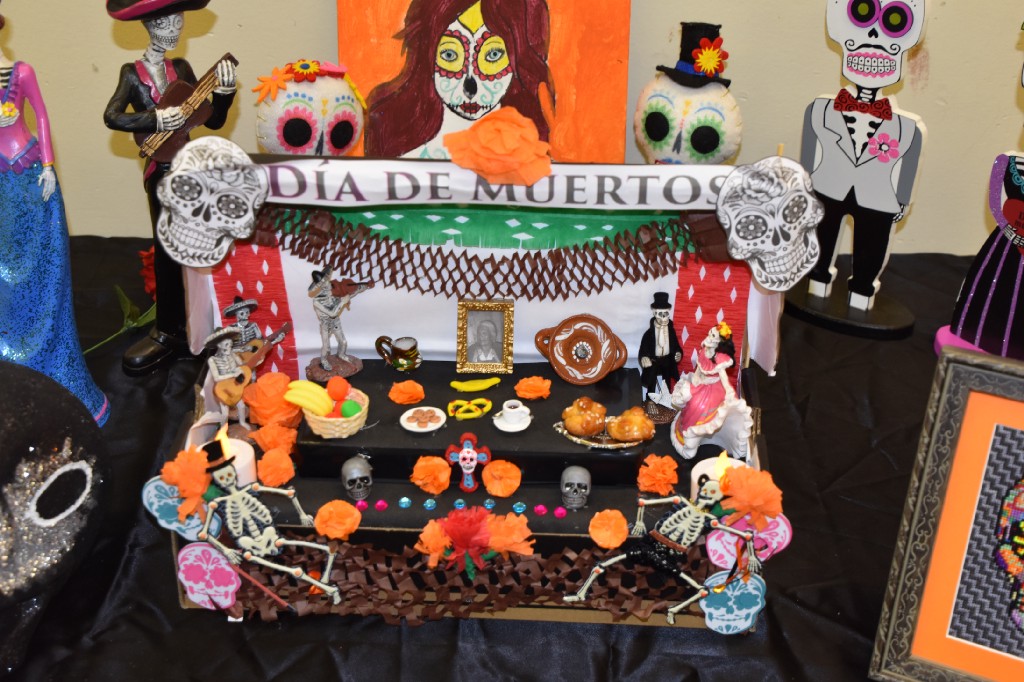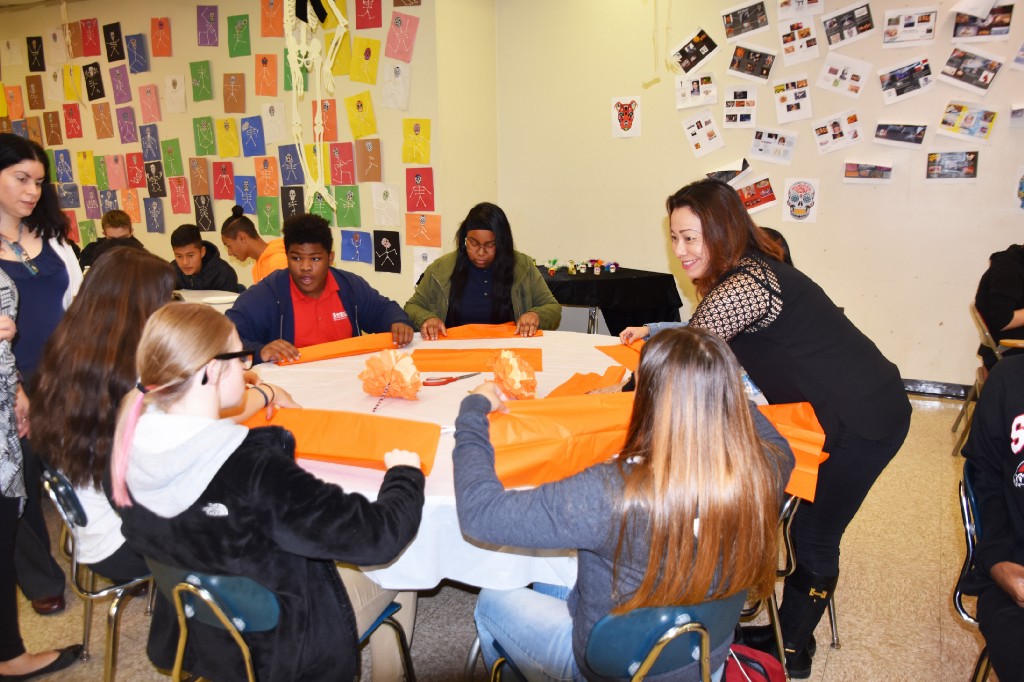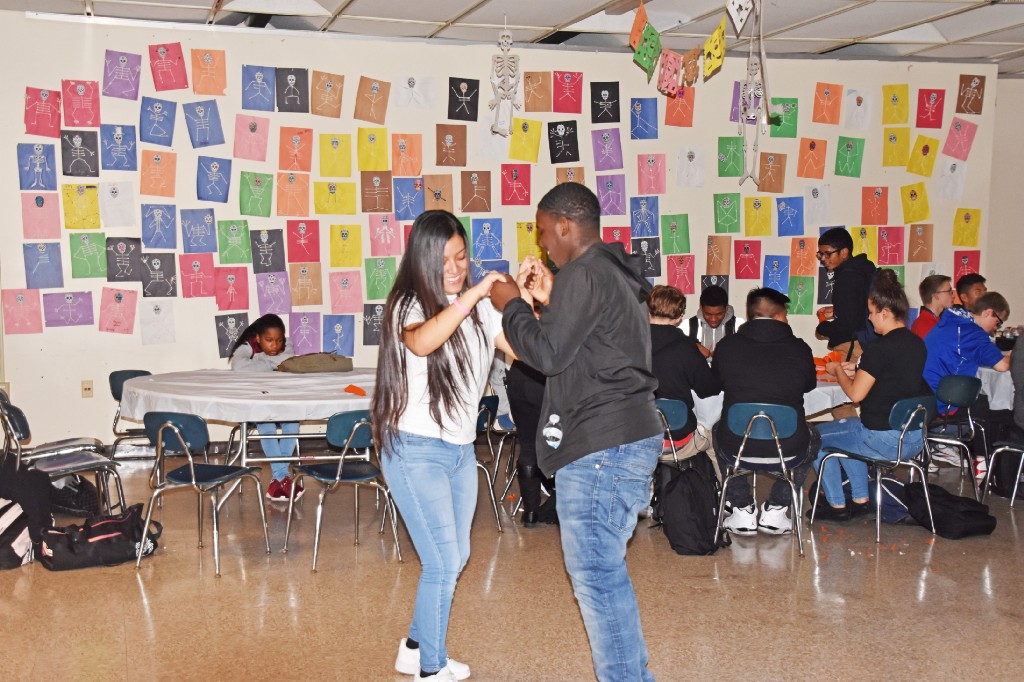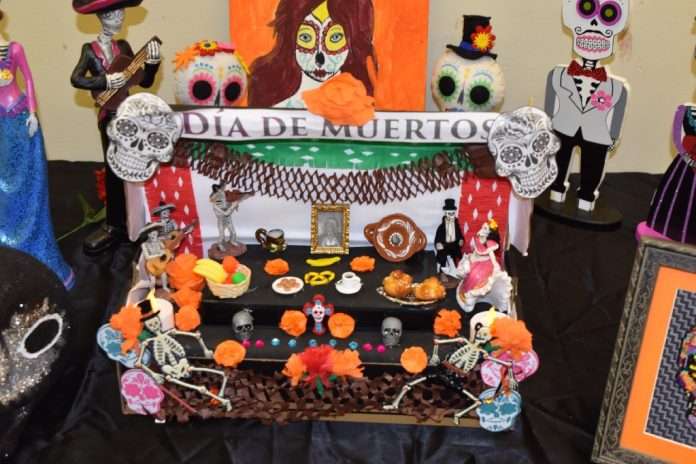Swenson Arts and Technology celebrated Dia de los Muertos, otherwise known as the Day of the Dead.

Swenson Arts and Technology High School had a celebration that is not commonplace among most schools in the city of Philadelphia. For the two days following Halloween, Swenson had its very own “Day of the Dead.”
Dia de los Muertos, or “Day of the Dead,” is a Mexican holiday celebrated on Nov. 1–2 in which families remember their loved ones who have passed away. This holiday, taking place on All Saints and All Souls Day, is meant to be an upbeat festivity, not a somber day of remembrance of loved ones who are no longer living.
In 2006, Claudia DiCrosta was in her first year teaching Spanish 1 at Swenson, 2750 Red Lion Road. DiCrosta wanted her students to learn the language, but thought it was essential to learn about the culture that comes with it.
“I wanted the kids to be able to understand, to me it’s important for you to learn the language, but with so many languages out there you might not be able to remember what the word for bathroom is, but it is if you learn something about the culture,” DiCrosta continued. “To me, it’s more important for you to be able to fit in with the culture than it is necessarily to remember a piece of vocabulary.”
DiCrosta had her Spanish 1 class build makeshift altars, or “ofrendas,” out of shoeboxes with images of deceased loved ones and products that their loved ones had enjoyed.
DiCrosta recognized this holiday just in her classroom with her Spanish 1 class up until four years ago. The students really enjoyed learning about the Day of the Dead, so the administration wanted to put this on display. Colette Langston is in her fifth year as principal at Swenson. As a new principal, she was enamored with what DiCrosta had done with this holiday.
“When I observed it in her classroom, I just thought it would be such a great opportunity because our school is very, very diverse,” said Langston.

Four years ago, Langston decided to ask if DiCrosta wanted to put her Day of the Dead celebration on display.
DiCrosta was cognizant that this would require more time and effort, but was ecstatic with the idea of having more people involved in this unique holiday.
The first time they celebrated the Day of the Dead in Room 263, it took months of planning. This became not just a Spanish class effort, but a collaboration with a multitude of classes. In addition to the students’ shoeboxes, which were smaller versions of the altars, the carpentry class made an actual wooden altar. This large altar would hold the objects and pictures of the deceased loved ones of faculty and students alike.
Images of skulls, also known as “calavera,” are placed on the altars and often have the names of the deceased person inscribed on the forehead. The digital media class was now making pictures of skulls to be placed throughout the classroom for the occasion.
The culinary students contribute by making pulled chicken and rice, while baking special “Day of the Dead” cookies.
“We really tried to show how all of these disciplines intersect,” said Langston.
This has expanded the knowledge of the Spanish 1 classes, but has also made certain students feel at home. Leslie Vazquez is one of those students. Vazquez is a first-year student at Swenson, but has celebrated this holiday her whole life. Her little “ofrenda” was dedicated to her great-grandmother, with whom she spent time.
“She was the one who was there always by my side,” she said. “I just wanted to honor her on these days.”

In addition to the efforts of the student body and faculty, those not affiliated with Swenson contributed.
Claudia L. Peregrina-Quintero is a community outreach counselor for Women Organized Against Rape. Peregrina-Quintero brought authentic “Day of the Dead Bread,” which is consumed only once a year on this holiday. She also demonstrated to students how to make paper flowers that are used in place of “cempasuchil,” which are flowers used to decorate altars and graves during the holiday.
“Swenson is definitely a microcosm of Philadelphia,” said Langston. “Philadelphia is a sanctuary city and so here we want to be a sanctuary for our students, so that when they come here they feel safe, they feel secure, and they learn how to respect people that are different from them.”
DiCrosta reiterated these sentiments and shared what she tells her students.
“It’s what I tell them (students), learn a language, embrace a culture, and change the world,” she said. “They have to get out of the mindset that this is what I know and this is what I’m comfortable with, and at least this way, they can see someone else’s culture.” ••





